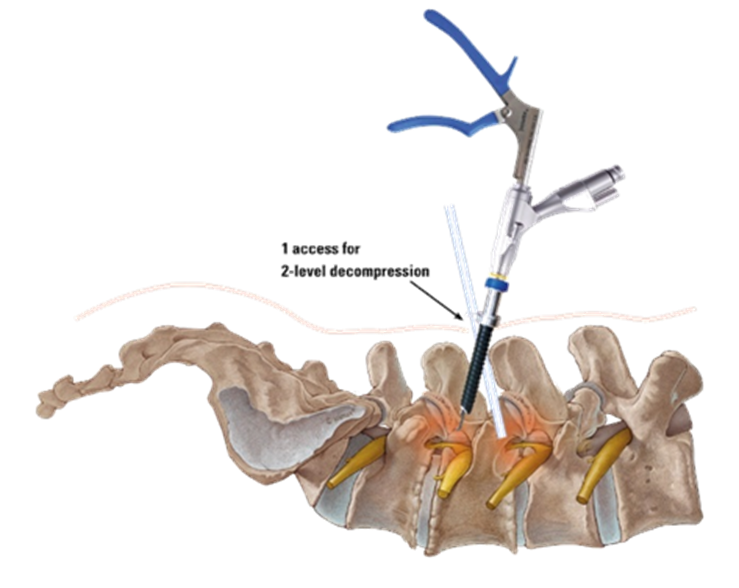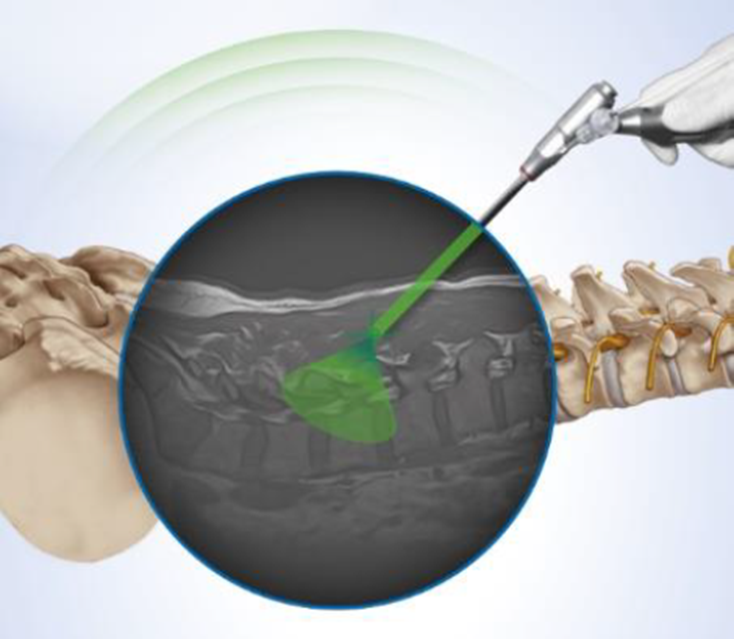
Here are five things you need to know about endoscopic spine surgery, a state-of-the-art surgical technique for managing conditions of the spine.
Find a spine specialist or doctor
1. What is endoscopic spine surgery?
Endoscopic spine surgery is a type of minimally invasive surgery, which means it is performed through a keyhole using specialised instruments. This allows the surgeon to conduct procedures without the need for a large incision.

Endoscopic surgery is performed through a keyhole using specialised instruments
Endoscopic procedures have been performed since 1950, when the first human knee joint was examined through a keyhole procedure called an arthroscopy. Since then, they have been increasingly used to examine and treat joint issues, particularly those affecting large joints like the knee, hip and shoulder. General surgeons also use endoscopic procedures in the abdomen.
Endoscopic surgery for the spine has been growing in popularity since the late 1990s, with a huge growth in the technique over the past 10 years. In many countries, endoscopic spine surgery is now considered mainstream and is widely performed.
Norwest Private Hospital is home to the first Australian Centre of Excellence for Spinal Endoscopy, in partnership with joimax® (who make a system used to perform endoscopic spine surgeries) and Australian medical device distributor LifeHealthcare.
2. What are the advantages of endoscopic spine surgery?
As a minimally invasive procedure, endoscopic spine surgery doesn’t involve large cuts through the skin and soft tissues or removal of significant amounts of bone. Less disruption of tissue can lead to reduced postoperative pain, faster recovery from surgery, and reduced time spent in hospital.
Modern technology allows the surgeon to see where the endoscopic instruments are within the person’s body. This means there is less need for X-rays, thereby reducing radiation exposure for the patient and surgical team.
Contemporary technology also allows the surgeon to closely monitor and control what’s happening throughout the procedure, providing an added level of safety.

Modern technology allows the surgeon to see what’s happening throughout the procedure
3. What conditions can be managed with endoscopic spine surgery?
Surgeons can use endoscopic spine surgery to perform minimally invasive decompression (pressure-relieving) and/or fusion procedures of the spine. It is used to treat a variety of spinal disorders and conditions, including:
- herniated discs
- sciatica
- fractures
- infections
- spinal stenosis
- spondylolisthesis
- spinal tumours.
4. How much does endoscopic spine surgery cost?
Your surgeon can explain more about the costs involved in surgery and your funding options. Depending on your fund and level of cover, private health insurance may contribute to the cost of endoscopic spine surgery. Speak to your fund for details. You may also need to pay some expenses out of pocket.
5. Is endoscopic spine surgery right for me?
Endoscopic spine surgery may be considered if you have one of the conditions described above. Your specialist can talk to you about whether this type of procedure is suitable for you.
Written by Dr Brian Hsu, Orthopaedic Spine Surgeon at Northern Beaches Hospital and Norwest Private Hospital.


